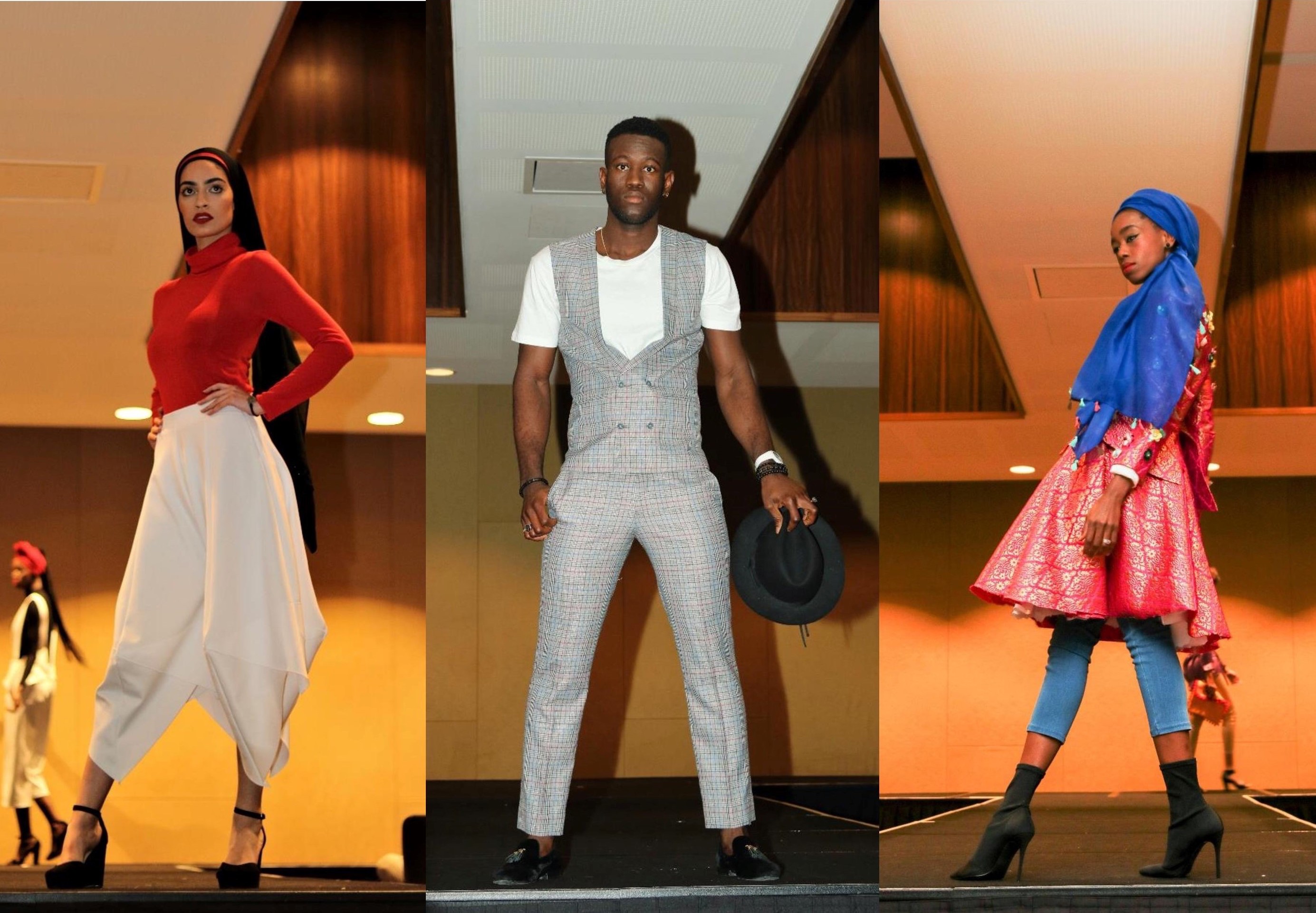On Saturday the UWA Club held what was quite possibly the most diverse event in its history – the launch of Modest Fashion Australia. Modest Fashion Australia is a movement lead by UWA Graduate Aisha Novakovich, to celebrate the existence of diverse options for men and women who desire to dress in a way that is conservative. Modest fashion refers to clothing that conceals the body, and sometimes the body-shape, apart from the head, feet and hands. Modest Fashion Australia is also a platform for emerging Australian fashion designers working in this space to support and learn from each other.
Qamar Designs by Azka Malik opened the show with a flamboyant display of bright purple silks and heavily embellished kurtas paired with hijabs and embroidered jeans. Maliks’ Pakistani and Saudi Arabian influences shone throughout her collection. The instinctive and unexpected pairings – including a top made entirely of silver tassles paired with a moonlight blue hijab – set the tone for what was to come.
Local sisters and designers, Denise & Daphne Wong brought what was closest to a streetwear collection with their label D-Tribe. With a black and white palette, they played with silhouettes, bringing in accents of red, navy blue and tan to set off their innovative and contemporary pieces. The final piece of their collection was a striking white jumpsuit worn over a black turtleneck, a layering which embodied the spirit of contemporary modest fashion.
Modest dressing for men was addressed by ENMaxwell , who showed a collection of perfectly tailored men’s suits. A varied colour palette of angular cuts with an emphasis on sharp shoulders and slim waists. Paired with T-shirts as well as the more traditional button-down shirts and skinny ties, this collection was an intentional display of the capacity of EN Maxwell to create bespoke suits to meet the needs of their clients.
Mizan – a predominantly menswear collection from Perth designer Shabnam Riaz paired sub-continent influences with western fashion for a modern ethnic fusion look. Primarily a collection of men’s knee-length kurtas with mandarin collars paired with skinny jeans and pashminas, Mizan is good quality clothing with minimal innovation. The most visually impressive of this collection was the monochromatic black and white linen kurtis on matching skinny jeans.
The singular women’s outfit in the Mizan collection drew gasps of appreciation from the audience, and for good reason. A white, heavily embroidered thigh length Anarkali style kurti with a front slit revealed a glimpse of the wearers’ skin. Worn over white skinny jeans this piece embodied the collections modest glamour aspirations.
Farrah Mazlina worked with a muted palette to bring the most consistently stunning work of the afternoon in this collection from Kazeca Studio. She uses strategically placed ruffles and peplums to simultaneously conceal and accentuate the femininity of the wearer. Her slim-fitting gowns and abayas boasting gold plated belts, military braids and buttons and body chains are contemporary masterpieces that retain their traditional beauty.
International guest fashion house Sogan Batik closed the afternoon. These pieces were floor length draped gowns, abayas and cloaks, heavily decorated in symbolic, hand printed batik patterns. The men wore batik sarongs with plain t-shirts – and somehow managed to make this look high fashion. The models – from BEYA Model Academy – appeared to relish the opportunity to have fun with the clothing. An elaborate headdress decorate with metallic tassels was the centrepiece of this collection which, as explained by the designers afterwards, was an opportunity for designers to tell a story of Islam which emphasised peace, love and unity.
The fashion on show connected Perth with Malaysian, Indonesian and Subcontinental sartorial influences. More importantly, it also connected a group of Australians from a wide range of ethnic backgrounds. The beauty of Modest Fashion Australia was evident in the growing friendships as guests eagerly discussed the clothes on show.
Modest fashion exists along the very wide spectrum of choice we have as feminists in today’s society. As much as we have the freedom – and numerous purchasing opportunities – to bare our skin – we should also have choices to cover up. Through the mainstreaming of modest fashion, we create opportunities for women from cultural backgrounds that encourage modesty in dress to participate more freely in public spaces. This has a positive social impact in that it increases diversity and gender equality in Western Australian public life. And let’s be honest – increasing the diversity of events being held in ‘old-school’ institutions such as the UWA club can never be a bad thing.
Rebecca Bowman
Endlessly fascinated by the way our clothes reveal and conceal who we are, Bec is currently suppressing her wanderlust long enough to finish an MBA at UWA.


